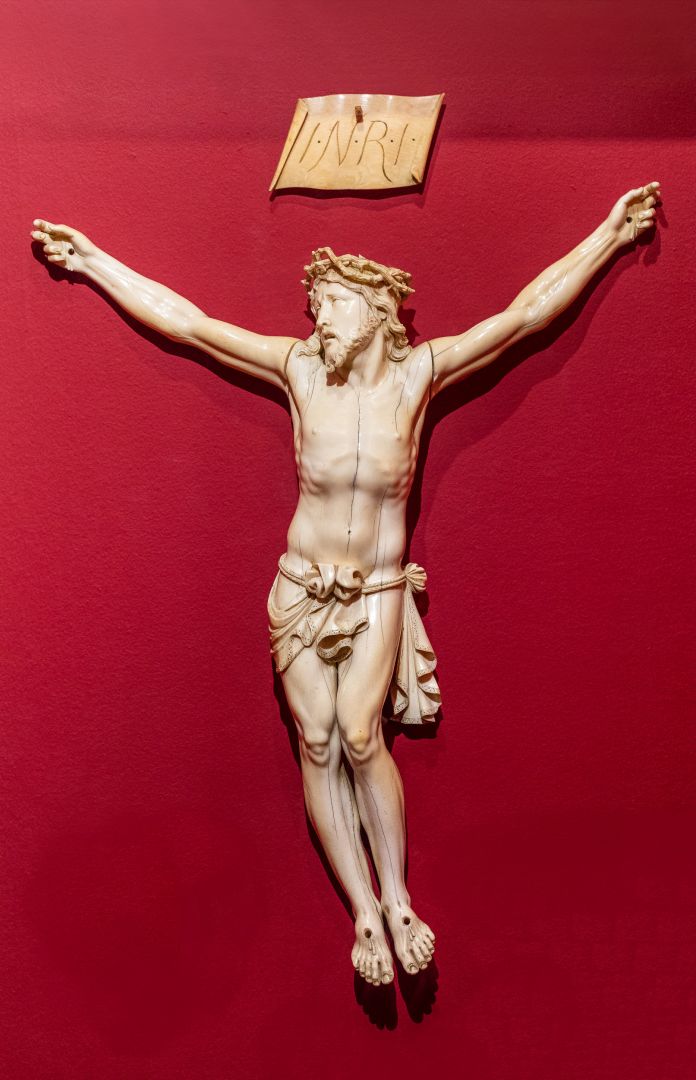Hall 1 - 6. view
Corpus
Follower of FRANCOIS DUQUESNOY (1594–1644)
Corpus, 1666
ivory, 51.5x43.8 cm; marking on the back: DF 1666
Historical Collection, Inv. No.: 53.847.1.
Ivory is a particularly favoured material in European applied arts. Ivory carving was popular during the Middle Ages and had a resurgence in the 17th century. Italian, Flemish and German masters competed with each other to create masterpieces. Their functioning was bolstered by the abundance of resources provided through the booming trade between Europe and Asia.
Although the artworks carved from ivory had really diverse themes, a large number of them were religious figurines, particularly corpora.
The corpus of the Herman Ottó Museum’s collection is an incredible, one of a kind work of art. The material is beautiful and its fineness suggest that whoever made it was not only a highly qualified artist but also a master of the craft.
The artwork is signed and dated. The DF monogram and the year 1666 can be found carved into the back edge of the loincloth. It can be assumed the creator was the follower of Francois Duquesnoy (1594–1644). Carvers would often use the monogram of their master, who was also known as ‘il Fiammingo’, even long after his passing. The uncertainties surrounding the origin of the corpus however do not diminish the artistic value it represents. The artwork represents perfect usage of the material, excellent anatomical knowledge and fine carving expertise.
The origins and the former owners are the corpus, as well as the circumstances of its arrival in Hungary are currently unknown.
Dr. László Kárpáti
(In: A Herman Ottó Múzeum műkincsei. Editors: Veres László–Viga Gyula. Borsod-Abaúj-Zemplén Megyei Múzeumi Igazgatóság, Miskolc, 1999. 298–299. Cat. 66.)
